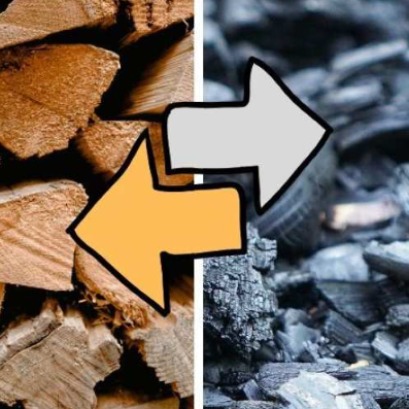
Forest residues at the service of biofuel
In Argentina, the waste produced by the forestry sector represents great potential for the production of bioenergy.
We know that worldwide energy consumption is growing and we still continue to use fossil fuels as the main source, which are located in some countries, causing great volatility in supply and serious environmental problems (air pollution, acid rain and emissions greenhouse gases).
A solution and a great opportunity is in the development of clean and renewable energies of biomass origin, which can be produced and consumed in a neutral CO2 environment.
Bioenergy is a renewable energy produced by materials derived from biological sources. Biomass resources are available in different forms or types: ONE OF THEM IS FOREST WASTE.
The great advantage of this type of energy is that it can produce liquid, gaseous and solid fuels, to be stored, transported and used with the same supply systems as fossil fuels.
In Argentina, the waste produced by the forestry sector represents great potential for the production of bioenergy.
We need to change this paradigm of energy for the good of all, and from our sector we want to raise awareness about the potential that we have at hand if we manage to promote methodologies that quantify forest biomass and generate an action plan to be able to promote work projects in this regard. .
The forest resources that we have in our country are: native forest (31,443,873 hectares) and implanted forest (1.15 million hectares). In turn, our forestry industry has a great diversity of establishments dedicated to different types of forestry productions, from sawing to the production of pulp and paper. Throughout this journey there is also waste that could be dumped into the production of biofuel.
Fortunately, there are already projects that put this form of energy production into practice, especially in the provinces of Corrientes and Misiones. But there is still a long way of dissemination, research and investments to be made, in order to move forward. Let's stay tuned for news and get involved with everything that our sector has to give.

IT MAY INTEREST YOU
 Experts cant believe it, but this tree is the oldest in the world and continues to bear fruit: it is 4,000 years old.
Experts cant believe it, but this tree is the oldest in the world and continues to bear fruit: it is 4,000 years old.
Nature keeps secrets that defy the passage of time, and one of the most surprising examples is a tree that, approximately 4,000 years old, continues to bear fruit today. This specimen has become a symbol of resistance and longevity, capable of surviving climate changes, landscape transformations and human activity itself.
 The second largest wetland in South America is located in Argentina: what is it?
The second largest wetland in South America is located in Argentina: what is it?
Argentina has national parks that place it in a unique position within South America, competing with 300 others. Which is the largest? South America is home to more than 300 national parks, but many go unnoticed. There are extensive wetlands that have been the subject of major ecological restoration projects, to coastal mountains with deep indigenous heritage. Today we tell you the case of one located in Argentina.
 Canadian researchers make biochar from wood waste that rivals steel in strength
Canadian researchers make biochar from wood waste that rivals steel in strength
Researchers at the University of Toronto have developed monolithic biochar from wood that can reach an axial hardness of up to 2.25 GPa, similar to mild steel.





















